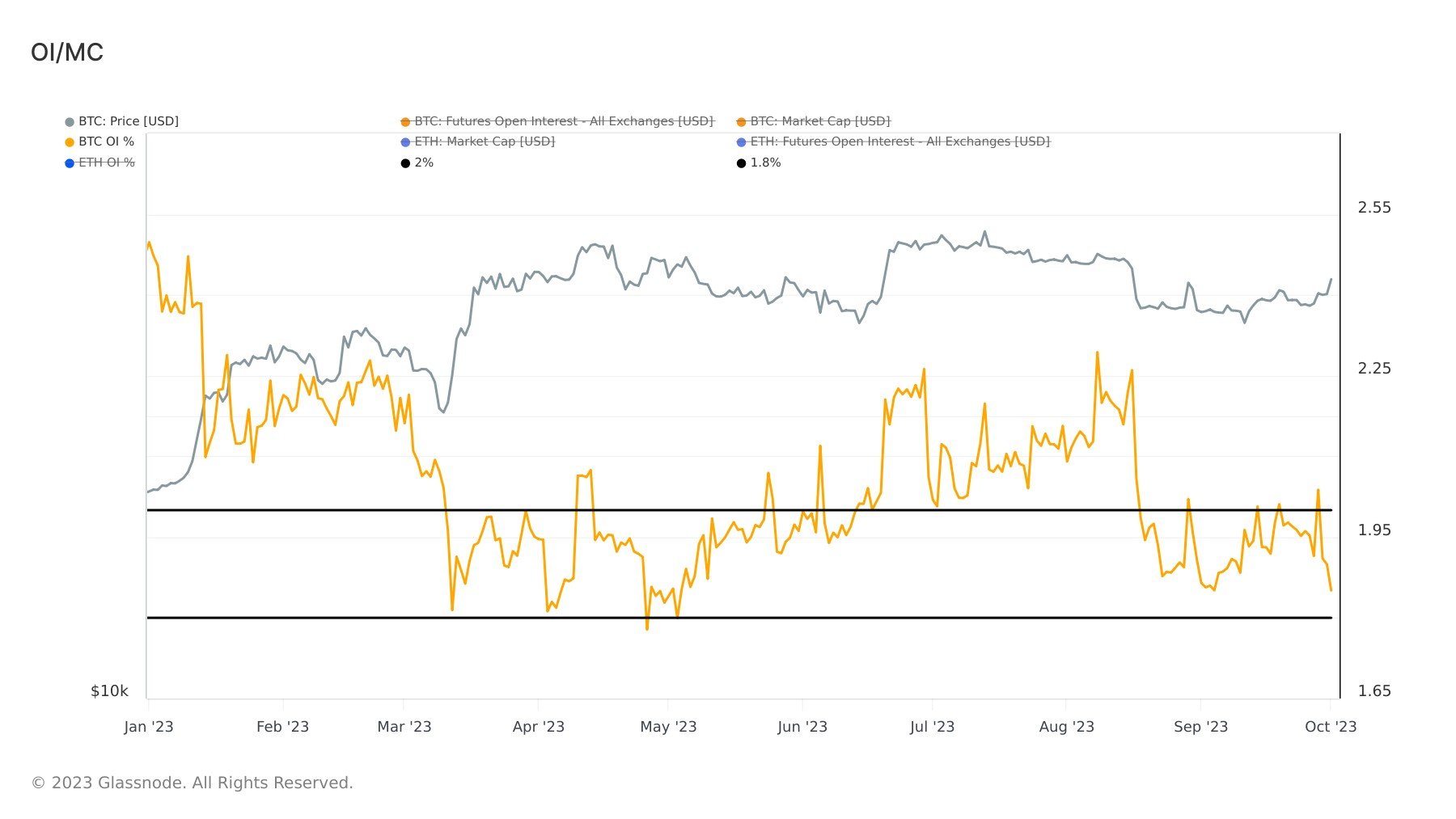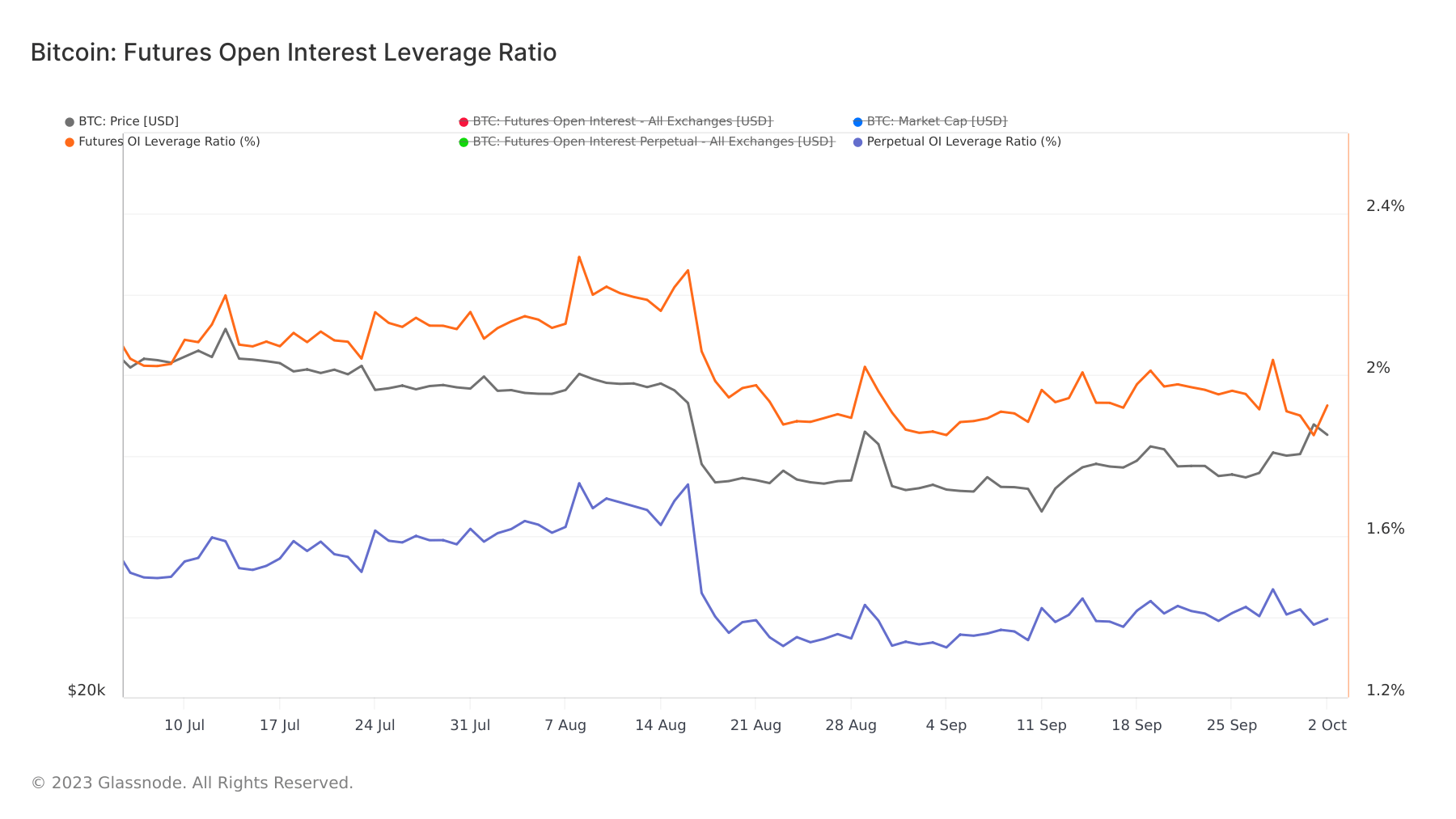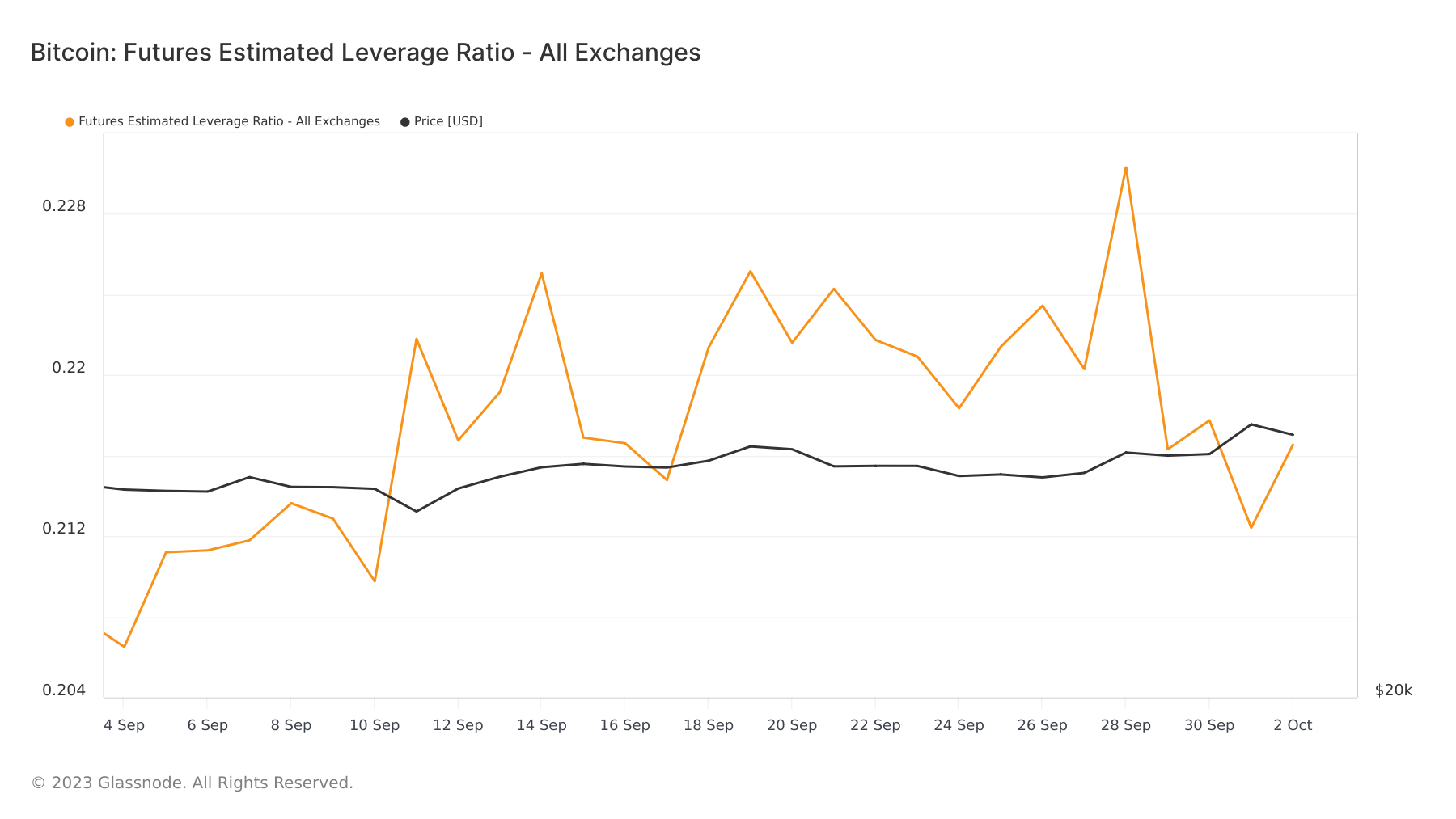The futures market has traditionally been a barometer of investor sentiment. Open interest, which represents the total number of outstanding futures contracts that have not yet been settled, is a measure of market activity. Historically, rising Bitcoin prices have correlated with an increase in open interest, indicating increased speculative activity.
However, Bitcoin’s recent rise above $28,000 defies this trend.
Despite this week’s rally, open interest in Bitcoin futures has declined significantly. Specifically, open interest, as a percentage of Bitcoin’s market capitalization, is approaching this year’s low of 1.82%. This represents a decrease of 28% compared to the figures at the beginning of the year. Such a contraction in open interest typically signals a decline in speculative trading, a surprising trend given the cryptocurrency’s bullish momentum.

Delving deeper into the futures market reveals more about these evolving dynamics. The futures open interest leverage ratio, which measures the total open interest of futures contracts relative to the market capitalization of the underlying assets, provides an insight into traders’ risk appetite. On September 27, this ratio was 1.91%, rising to 2.03% on September 28, before falling back to 1.85% on October 1. A similar trend was observed in the open interest leverage ratio for perpetual futures, which rose from 1.4% to 1.46% and then fell to 1.38% within the same time frame.
Despite the further price increase on October 1, the decline in leverage ratios could indicate that traders were becoming more cautious or taking profits. It suggests that some traders may have been anticipating a possible price correction or consolidation, and therefore reduced their leveraged positions to minimize risk.

Another measure, the estimated leverage ratio for futures across all exchanges, fell from 0.23 on September 28 to 0.21 on October 1. The metric provides an average measure of the leverage used by traders in the futures market. When this ratio decreases, it generally indicates that traders are using less leverage on the exchanges.

The initial rise in leverage ratios on September 28 could indicate that traders were using more borrowed money to speculate on further price increases. However, the subsequent decline in both the specific futures open interest leverage ratios and the overall estimated leverage ratio on the exchanges on October 1 indicates a broader trend of reduced leverage use. Even as the price of Bitcoin continued to rise, traders on average reduced their leverage. This could indicate that traders were managing their risk by not using too much leverage in a market that had recently experienced significant price movements.
Bitcoin’s rising price, amid falling open interest and reduced leverage, indicates that the current price rally may be driven less by short-term speculation and more by real long-term investor confidence. This could mean greater participation from institutional investors or a broader shift in retail investor strategy from speculative trading to long-term investing.
While reduced speculative activity can stabilize the market and reduce volatility, it also means reduced liquidity. For traders, this means that while the market is less sensitive to sudden price corrections due to liquidation events, it is also less responsive to buy or sell orders, which can lead to price declines.
The post Declining Open Interest in the Futures Market Contrasts with Bitcoin’s Bullish Rally appeared first on CryptoSlate.
